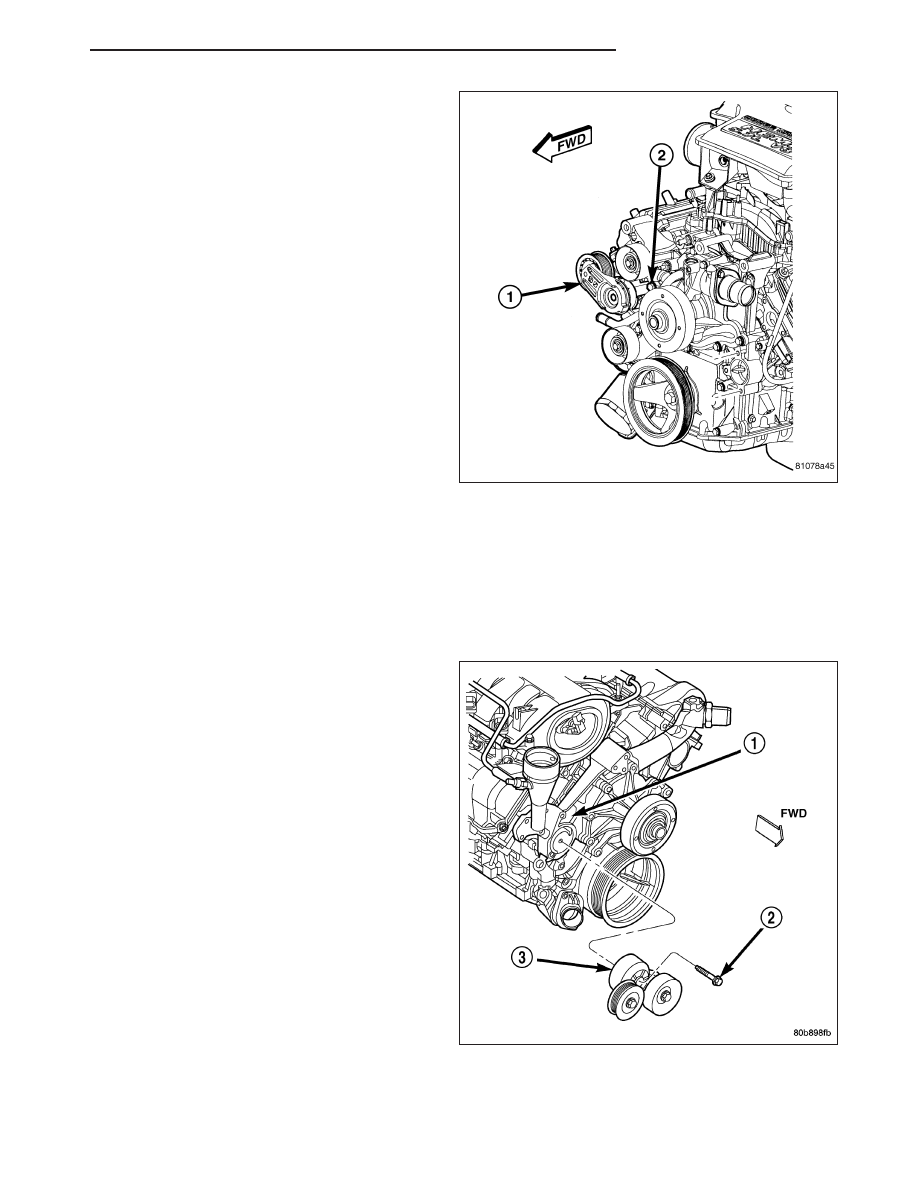Dodge Durango (HB). Manual - part 131

Correct drive belt tension is required to ensure opti-
mum performance of the belt driven engine accesso-
ries. If specified tension is not maintained, belt
slippage may cause; engine overheating, lack of
power steering assist, loss of air conditioning capacity,
reduced generator output rate, and greatly reduced
belt life.
It is not necessary to adjust belt tension on the 3/7L/
4.7L or 5.7L engines. These engines are equipped
with an automatic belt tensioner (1). The tensioner
maintains correct belt tension at all times. Due to use
of this belt tensioner, do not attempt to use a belt ten-
sion gauge on these engines.
OPERATION
The automatic belt tensioner maintains belt tension by using internal spring pressure, a pivoting arm and pulley to
press against the drive belt.
REMOVAL
3.7L/4.7L ENGINE
On 4.7L engines, the tensioner (3) is equipped with
an indexing tang on back of tensioner and an
indexing stop on tensioner housing. If a new belt
is being installed, tang must be within approxi-
mately 24 mm (.94 inches) of indexing stop. Belt is
considered new if it has been used 15 minutes or
less.
If the above specification cannot be met, check for:
•
The
wrong
belt
being
installed
(incorrect
length/width)
•
Worn bearings on an engine accessory (A/C
compressor,
power
steering
pump,
water
pump, idler pulley or generator)
•
A pulley on an engine accessory being loose
•
Misalignment of an engine accessory
•
Belt incorrectly routed.
Note: A used belt should be replaced if tensioner
indexing arrow has moved to the minmum tension
indicator. Tensioner travel stops at this point.
1. Remove accessory drive belt (Refer to 7 - COOL-
ING/ACCESSORY
DRIVE/DRIVE
BELTS
-
REMOVAL).
HB
ACCESSORY DRIVE
7 - 19